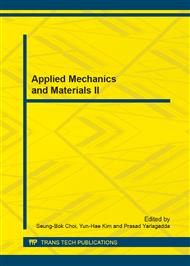p.368
p.374
p.379
p.384
p.388
p.392
p.396
p.400
p.404
Development of a Self-Balancing Cooling System Based on Harvesting Heat via Stirling Engine
Abstract:
Most of days, the summer temperature in Taiwan is higher than 30 degree Celsius. Where, heat dissipation for devices becomes more difficult and needs more electric power. In addition, devices discharging waste heat via traditional ways that accelerates global warming. In order to serve above problems, a self-balanced cooling system is developed. Based on Stirling engine, waste heat is recycled and transformed into a kinetic power. In this paper, this power is used to relieve heat via a fan by devices themselves. Besides, for higher heat input yields larger power to drive a fan and vice versa to Stirling engine, a self-cooling cycle naturally forms under above autonomous control. The feasibility assessment will be confirmed via simulation studies.
Info:
Periodical:
Pages:
388-391
Citation:
Online since:
December 2013
Authors:
Keywords:
Price:
Сopyright:
© 2014 Trans Tech Publications Ltd. All Rights Reserved
Share:
Citation:


